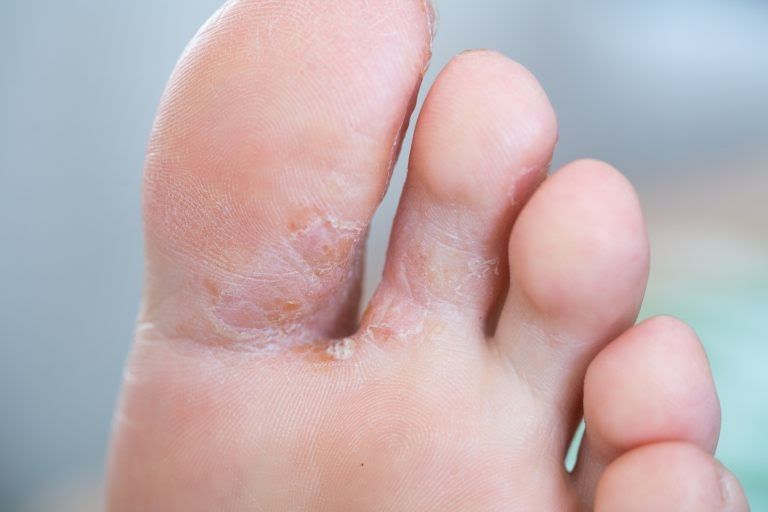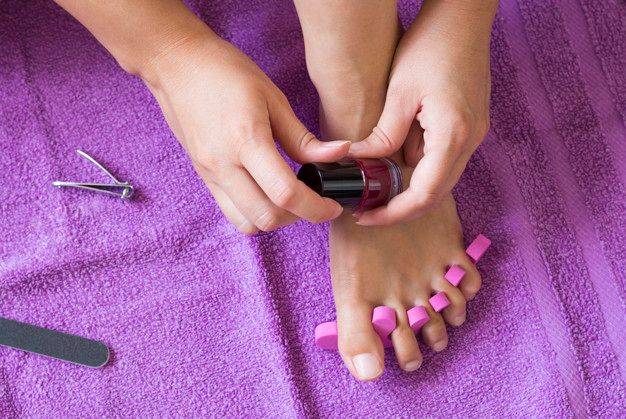Some skin and fungal infections are pretty common and happen all the time. One of these common types of fungal infection is the Athlete’s foot. About one in four people have an athlete’s foot at some point in their life. Even though it’s a very common fungal infection, very few people actually know what athlete’s foot is, it’s symptoms and its causes. Fungi often occur on human skin and are usually not harmful.
However, these infections can amplify and multiply with time. Most fungi occur on warm, moist and airless areas of the skin like between the toes. So, are you wondering what is Athlete’s foot and how to get rid of it?
Read on to find what is athlete’s foot!
What is Athlete’s Foot?
Athlete’s foot is a fungal infection that affects the upper layer of the skin of your foot when it is warm, moist and airless. It is also commonly referred to as times Pedi and ringworm of the foot. The fungus which causes this condition is called Trichophyton is found on floors and clothing. It is a contagious infection that affects the skin on the feet and can be spread to the toenails and hands. The name of this fungal infection mostly happens with athletes that is why it is called the Athlete’s foot.
Also read: Vaginal Yeast Infection
Although the Athlete’s foot is not a serious condition. However, for some people, it’s hard to treat it. People with diabetes or a weak immune system should be treated right away. It is usually scaly, red, raw, appearing erupting with weeping and oozing with small blisters. This condition is common with people who wear shoes or socks that make their feet sweaty. This infection can be spread from person to person and typically spreads along the skin.
Symptoms of Athlete’s Foot
Athlete’s foot usually affects the skin on the foot and it becomes itchy with rashes. Bacterial infections may happen along with this condition. When this condition gets severe, it forms open sores in the skin which makes it even more vulnerable to bacteria. It can occur in one or both feet and there are different types of it. The itchy rash between your toes which may be red might be Athlete’s foot. It can spread to your toenails, sole and even your hands if you touch your feet with it.
Here are some common symptoms of Athlete’s foot you should know about:
- Scale and an itchy red rash between your toes.
- Itching, stinging and burning sensation between your toes, toenails or soles.
- Peeling skin on your feet, between your toes or soles.
- Dry or flaky skin on the sides and soles of your feet.
- Raw skin on the feet.
- Discoloured, crumbly and thick toenails.
- Toenails that can be plucked away from the nail bed.
- Blisters or ulcers on the skin of the feet.
- Ulcers that leak fluid and have an unpleasant smell and look red.
- Thickening of the soles of the feet.
If an athlete’s foot is caused by a fungus, it can be contagious or can be spread from person to person. Some people do not develop an infection after exposure to the fungus.
What Causes an Athlete’s Foot?
 athlete’s foot
athlete’s footAthlete’s foot can be caused by many types of fungi which includes yeast. It is caused by a variety of fungi all of them belonging to a group called dermatophytes which causes jock itch and ringworm. The fungi develop on the closed, warm and moist area of the skin. It feeds on keratin which is a protein found in hair, nails and skin. Walking barefoot may increase the chances of developing an Athlete’s foot.
The fungi grow in the top layer of the skin (epidermis) and enter through small cracks. The microbes require moisture and warmness to thrive and spread. You can get athlete’s foot if you do not maintain proper hygiene like:
- Don’t wash and dry your feet after your feet get sweaty or wet.
- If you wear damp socks or tight-fitting shoes.
- Share clothing, bedsheets, rugs, mats with someone who has Athlete’s foot.
- Walk barefoot in public areas like swimming pools and showers.
Men are more likely to develop an athlete’s foot. Although the infection is mild, it can get serious if you have diabetes. If you have diabetes or experience excessive swelling, redness, leakage and fever, you should call your doctor.
Also read: Home Remedies For Red Spots On Face
How is Athlete’s Foot Treated?
 athlete’s foot
athlete’s footYour doctor may be able to recognise an athlete’s foot just by looking at it or they may suggest a skin test if they aren’t sure. Athlete’s foot can be treated with OTC or over the counter topical antifungal medications. OTC medications can be bought at pharmacies that are effective in removing the infection. Antifungal medications are available as tablets, powders, liquids, sprays and creams. Topical over the counter medications for skin infections usually work and apply directly to the skin.
The doctor may suggest antifungal medications which may include:
- Miconazole
- Terbinafine
- Clotrimazole
- Butenafine
- Tolnaftate
- Sulconazole
- Ketoconazole
- Econazole
How to Prevent Athlete’s Foot?
 athlete’s foot
athlete’s footFollowing simple hygienic tips can help you get rid of an athlete’s foot. You can try the following steps to treat and prevent athlete’s foot.
- Wash feet with soap and water frequently.
- Soak your feet in saltwater or diluted vinegar to clear the blisters.
- Make sure your feet are completely dry after you wash between the toes.
- Change your socks and shoes often to keep your feet dry.
- Wash your sheets and towels regularly and do not share them.
- You can also soak your feet in a tea tree oil solution which you can purchase online.
- Wear pool slippers when you are around public swimming pools or showers.
- Make sure the feet are dry before putting on socks, stockings or tights.
- Remove your shoes as soon as you stop the exercise.
This was all about what is athlete’s foot, its symptoms, causes and treatment. To avoid having athlete’s foot, you can simply follow a hygienic lifestyle and avoid touching someone else’s clothing, bed sheets, mats and rugs.
Also read: 9 Grooming Products Every Man MUST Own!

